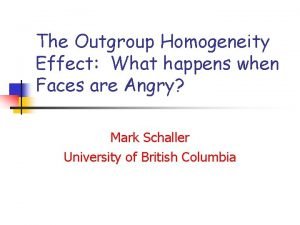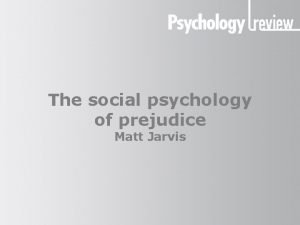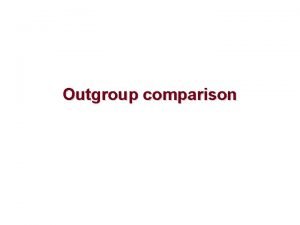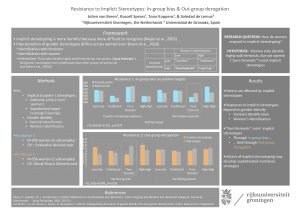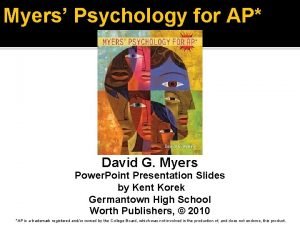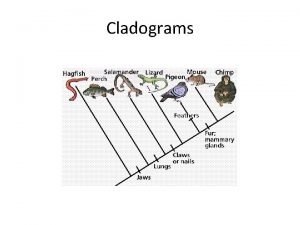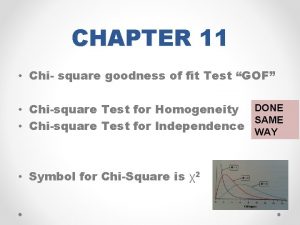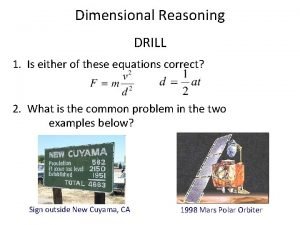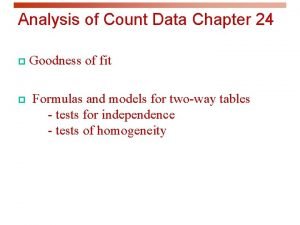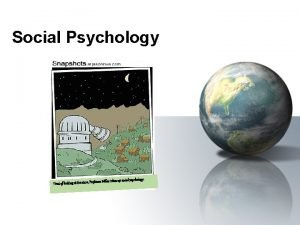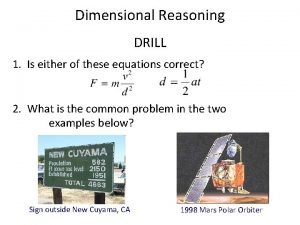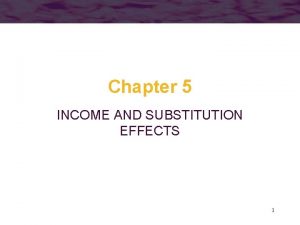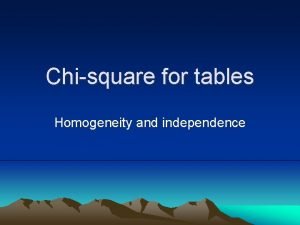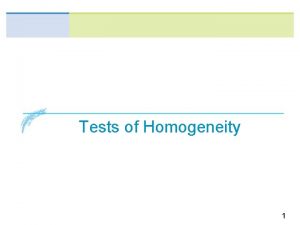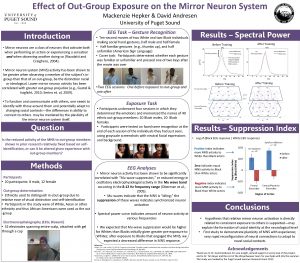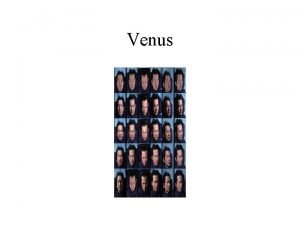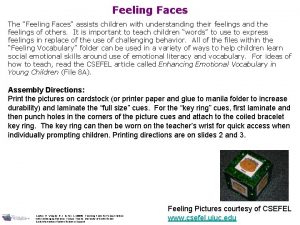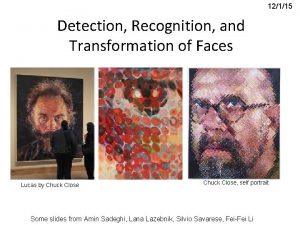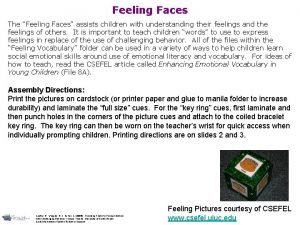The Outgroup Homogeneity Effect What happens when Faces















- Slides: 15

The Outgroup Homogeneity Effect: What happens when Faces are Angry? Mark Schaller University of British Columbia

Thank you n n n n Josh Ackerman Jenessa Shapiro Vaughn Becker Vladas Griskevicius Jon Maner Steve Neuberg Doug Kenrick Research supported by U. S. National Institutes of Health

The outgroup homogeneity effect: Definition n “The tendency to perceive members of an out-group as “all alike” or more similar to each other than members of the ingroup” (Baron, Byrne, Branscombe, 2006, 11 th edition).

Examples of the outgroup homogeneity effect n n n People rate students from another university as more homogeneous than students at their own university (Rothgerber, 1997). This can reverse (creating “in-group homogeneity”) among some minority groups seeking a strong sense of solidarity within their ingroup (Simon & Pettigrew, 1992). Eyewitness identification (Anthony, Copper, & Mullen, 1992).

Functional perspective on allocation of attention n n Attention is a limited resource. It is allocated selectively to things that matter most (Schaller, Park, & Kenrick, 2007). E. g. , snakes (Ohman et al. , 2001). E. g. , attractive women (Maner et al. , 2003). E. g. , ingroup members)

Angry faces n n The face in the crowd effect (Fox, Lester, Russo, Bowles, Pichler, & Dutton, 2000). Angry faces are like snakes.

Hypothesis n n When people are looking at neutral faces, we will replicate the outgroup homogeneity effect (Better recognition memory for ingroup faces than outgroup faces. ) When people are looking at angry faces, the outgroup homogeneity effect will be eliminated and maybe even reversed (Better recognition memory for outgroup faces than ingroup faces).

Methods n Experimental Design: 2 (Target Race: Black, White) x 2 (Target Expression: Neutral, Angry) x 2 (Distracter: Present, Absent) x 3 (Presentation Duration: 500 ms, 1000 ms, 4000 ms) mixed design. (Target Race and Target Expression were within-participant manipulations and Presentation Duration and Distracter were between-participants manipulations. )

Methods (continued) n n n One hundred ninety-two White undergraduate students (117 male, 75 female) participated in exchange for course credit. Presentation stimuli included sixteen 5 x 3. 5 inch grayscale, front-oriented male faces (Black/White, angry/neutral). For participants in the Distracter-Present condition, sixteen similarly sized grayscale images of abstract art were randomly paired with the faces.

Methods (continued) n n Counterbalanced across participants, sixteen new faces (Black/White, angry/neutral) were employed as foils in the recognition memory test. Participants next watched a five-minute distracter film clip before recognition memory task (including previously-presented faces and foils). For each photograph, participants responded on a 6 -point scale ranging from “definitely did not see” to “definitely did see. ”

Methods (continued) n n Nonparametric signal detection measures of sensitivity (A') and response bias (B''d) (Stanislaw & Todorov, 1999; Donaldson 1992). Analyses: 2 (Target Race: Black, White) x 2 (Target Expression: Neutral, Angry) x 2 (Distracter: Present, Absent) x 3 (Presentation Duration: 500 ms, 1000 ms, 4000 ms) ANOVA on A’ and B”d.

Results (A’ and B’’d) n n A’: 2 -way Target Race X Target Expression interaction: F(1, 191)=44. 90, p<. 001. B’’d: 2 -way Target Race X Target Expression interaction: F(1, 191)=70. 43, p<. 001.

White Neutral Black Neutral White Angry Black Angry HR FAR A’ B”d . 677 . 121 . 844 -. 406 . 793 . 421 . 742 . 371 . 773 . 223 . 833 . 022 . 802 . 178 . 873 -. 058

Effects of Processing Time and Distractors on A’ n n A planned contrast comparing the Target Race X Target Expressions interaction in the most highly constrained condition (500 ms/distracter) to that in the least constrained condition (4000 ms/no distracter), indicated a significant change in the strength of the memory crossover, F(1, 186)=4. 51, p<. 05. These results support the possibility that the out-group heterogeneity effect for angry faces may emerge primarily when processing ability is limited.

Limitations n n n Only Male target faces. Only Black/White target faces. Only White participants. Only angry faces. Only university students as participants. Only people from one culture as participants.
 Out-group homogeneity effect
Out-group homogeneity effect Outgroup homogeneity
Outgroup homogeneity Outgroup homogeneity bias
Outgroup homogeneity bias 6 equal faces 8 vertices
6 equal faces 8 vertices Outgroup comparison
Outgroup comparison Out-group derogation is:
Out-group derogation is: What is an outgroup in a cladogram
What is an outgroup in a cladogram Abu ghraib
Abu ghraib Do slug have hair
Do slug have hair What is chi square test of homogeneity
What is chi square test of homogeneity V=u+at is dimensionally correct
V=u+at is dimensionally correct Chi square test homogeneity
Chi square test homogeneity Associated features
Associated features 7 fundamental si units
7 fundamental si units Marshallian demand function
Marshallian demand function Bohr effect and haldane effect
Bohr effect and haldane effect
